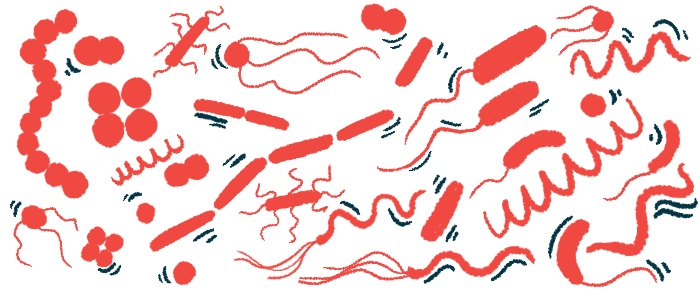NACFC 2023: Blocking ferroptosis may treat bacterial infections
P. aeruginosa infections are major contributor to lung disease in CF
Written by |

Blocking iron-dependent cell death, a process called ferroptosis, may treat antibiotic-resistant Pseudomonas aeruginosa lung infections in people with cystic fibrosis (CF).
“Blocking ferroptosis might be a really promising and unique new way to treat [Pseudomonas aeruginosa] infections,” said Peter A. Jorth, PhD, from Cedars-Sinai Medical Center, California, in an oral presentation at the 2023 North American Cystic Fibrosis Conference (NACFC) in Phoenix.
Infections with Pseudomonas aeruginosa bacteria, also called P. aeruginosa, are a major contributor to lung disease in CF, an inherited condition that features the buildup of thick mucus in the lungs and other organs.
Over time, P. aeruginosa can grow resistant to antibiotics, which can lead to more frequent exacerbations, when lung function suddenly worsens, along with decreased lung function and hospitalizations.
It’s thought that as some bacteria become more antibiotic-resistant, they become less virulent, or less able to cause tissue damage and disease. However, recent research has shown that some strains of P. aeruginosa remain highly virulent despite developing antibiotic resistance.
The role of ferroptosis in lung infections
A recent study from Jorth’s research group found this cell-damaging virulence in P. aeruginos antibiotic-resistant strains is driven by ferroptosis, a type of iron-dependent programmed cell death that’s characterized by lipid peroxidation, or the oxidative degradation of fat-like lipids, resulting in cell damage.
Using gallium, a chemical element that mimics iron, reduced bacterial counts and reduced damage to macrophages, a type of immune cell that fights bacterial infections.
Based on these findings, Jorth and his colleagues wondered if these virulence mechanisms can be used against P. aeruginosa, including antibiotic-resistant strains, to reduce disease.
The team first confirmed that healthy mice infected with P. aeruginosa showed signs of ferroptosis-related lipid peroxidation in the airways.
Using a model of acute infection, healthy mice were then pre-treated with a ferroptosis blocker called UAMC-3203 before their lungs were exposed to a standard strain of P. aeruginosa. UAMC-3203 suppressed bacterial growth, dampened lipid peroxidation, and improved lung function, results showed.
In a chronic infection model that resembled ongoing CF infections, mice lungs were first exposed to P. aeruginosa before receiving regular UAMC-3203 treatments. The mice treated with UAMC-3203 had slightly lower bacterial counts than untreated control mice, while their lung function improved.
To determine if P. aeruginosa strains isolated from CF patients can be treated with ferroptosis blockers, researchers infected healthy mice with those bacterial strains associated with high and low levels of lipid peroxidation. Results indicated P. aeruginosa isolates with high levels of lipid peroxidation were associated with more bacterial growth during lung infections.
In summary, blocking ferroptosis reduced lipid peroxidation, suppressed the growth of P. aeruginosa, and improved lung function in models of both acute and chronic infections.
Future studies will test ferroptosis blockers in additional P. aeruginosa strains isolated from patients in CF animal models, Jorth said. Ferroptosis inhibitors being developed for other diseases will also be tested, which may be more translatable to patients.







